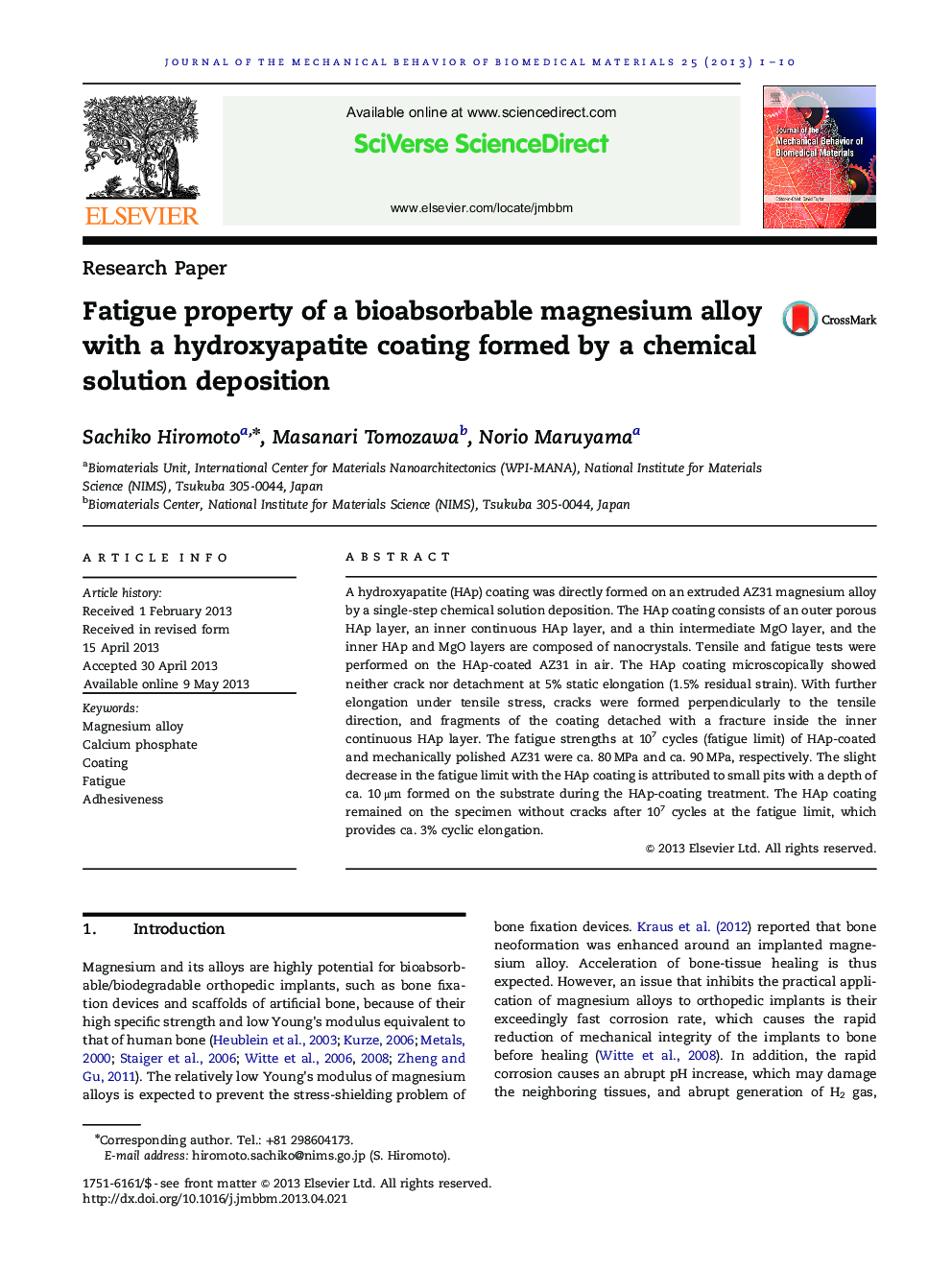| Article ID | Journal | Published Year | Pages | File Type |
|---|---|---|---|---|
| 810821 | Journal of the Mechanical Behavior of Biomedical Materials | 2013 | 10 Pages |
•We performed fatigue and tensile tests of hydroxyapatite(HAp)-coated AZ31 Mg alloy.•The coated AZ31 showed high adhesiveness under 5% static and 3% cyclic elongations.•Fatigue limit of the AZ31 slightly decreased with the HAp coating.•Small pits with a depth of ca. 10 μm were formed on AZ31 during the HAp coating.•The small pits caused the decrease of fatigue strength.
A hydroxyapatite (HAp) coating was directly formed on an extruded AZ31 magnesium alloy by a single-step chemical solution deposition. The HAp coating consists of an outer porous HAp layer, an inner continuous HAp layer, and a thin intermediate MgO layer, and the inner HAp and MgO layers are composed of nanocrystals. Tensile and fatigue tests were performed on the HAp-coated AZ31 in air. The HAp coating microscopically showed neither crack nor detachment at 5% static elongation (1.5% residual strain). With further elongation under tensile stress, cracks were formed perpendicularly to the tensile direction, and fragments of the coating detached with a fracture inside the inner continuous HAp layer. The fatigue strengths at 107 cycles (fatigue limit) of HAp-coated and mechanically polished AZ31 were ca. 80 MPa and ca. 90 MPa, respectively. The slight decrease in the fatigue limit with the HAp coating is attributed to small pits with a depth of ca. 10 μm formed on the substrate during the HAp-coating treatment. The HAp coating remained on the specimen without cracks after 107 cycles at the fatigue limit, which provides ca. 3% cyclic elongation.
Graphical abstractFigure optionsDownload full-size imageDownload high-quality image (255 K)Download as PowerPoint slide
